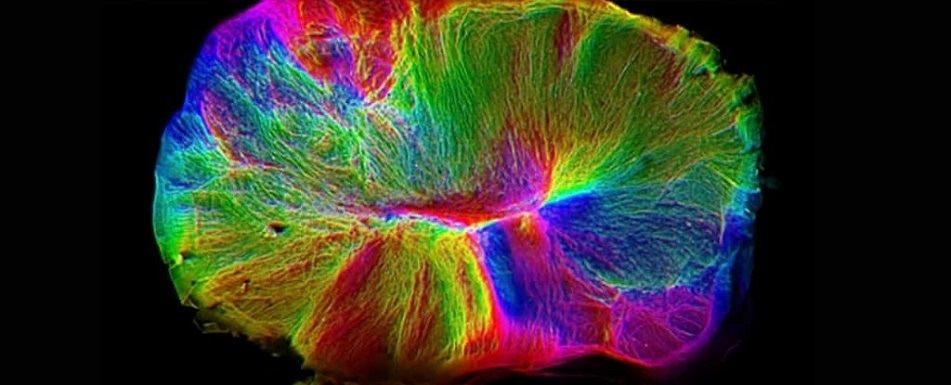Researchers at Cambridge Biomedical Campus have grown the most sophisticated brain organoid to date, providing new opportunities for scientists to understand human brain development and neurological disorders.

The team cultivated the “brain-in-a-dish” using a new method that allowed the organoid to reach the most advanced developmental stage yet, with spinal cord and muscle tissue attached.
Brain organoids are one of the best tools researchers can use to understand central nervous system (CNS) development and disease, but growing the structures beyond a certain stage is difficult.
The organoids are usually grown from human stem cells that spontaneously form the structures and layers seen in early brain development. However, the developmental stage reached is limited by a lack of nutrient and oxygen supply once the cluster of brain cells reaches a certain size. The neurons then start to die and the structure stops developing.
As reported in the journal Nature Neuroscience, Madeline Lancaster and colleagues have overcome this limitation by using a new method that allows the organoid access to energy and oxygen. Using a tiny vibrating blade, the researchers cut the organoid into half-millimeter slices and placed them on a porous membrane that covered a nutrient-rich liquid. The organoid could then simultaneously absorb oxygen from above and nutrients from below, which allowed it to continue developing in culture for a year.
The researchers then placed a piece of spinal cord and muscle tissue taken from a mouse embryo alongside the organoid. Using long-term live microscopy, the team were able to see the brain cells send out long, probing tendrils and form neuronal connections with the spinal cord.
"After 2-3 weeks in co-culture, dense axon tracts from the [organoid] could be seen innervating the mouse spinal cord and synapses were visible between human projecting axons and neurons of the mouse spinal cord," write the authors.
Once the brain cells had linked to the spinal cord, they started sending out electrical impulses that caused the muscles to contract under the control of the organoid.
"Live imaging of the mouse muscle tissue revealed sporadic concerted muscle contractions with an irregular periodicity."
Although the brain organoid is the most sophisticated yet, it is still only small and primitive in terms of grey matter volume and far from the complexity needed for anything approaching thoughts, feelings or consciousness.
“It’s still a good idea to have that discussion every time we take it a step further. But we agree generally that we’re still very far away from that,” says Lancaster.
Nevertheless, Lancaster and team are hopeful that their new method will enable scientists to model the CNS and brain disease in more detail than ever before.
"For instance, it opens the door to the study of neurodevelopmental conditions of the corpus callosum, neuronal circuit imbalances seen in epilepsy, and other defects where connectivity is thought to play a role, such as in autism and schizophrenia,” they write.
Sources: https://www.nature.com/articles/s41593-019-0350-2